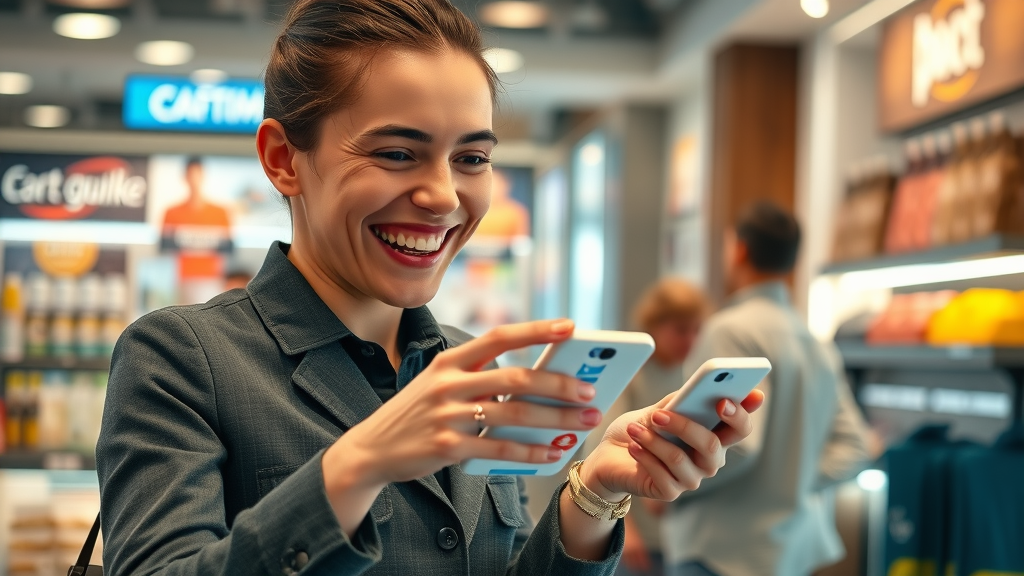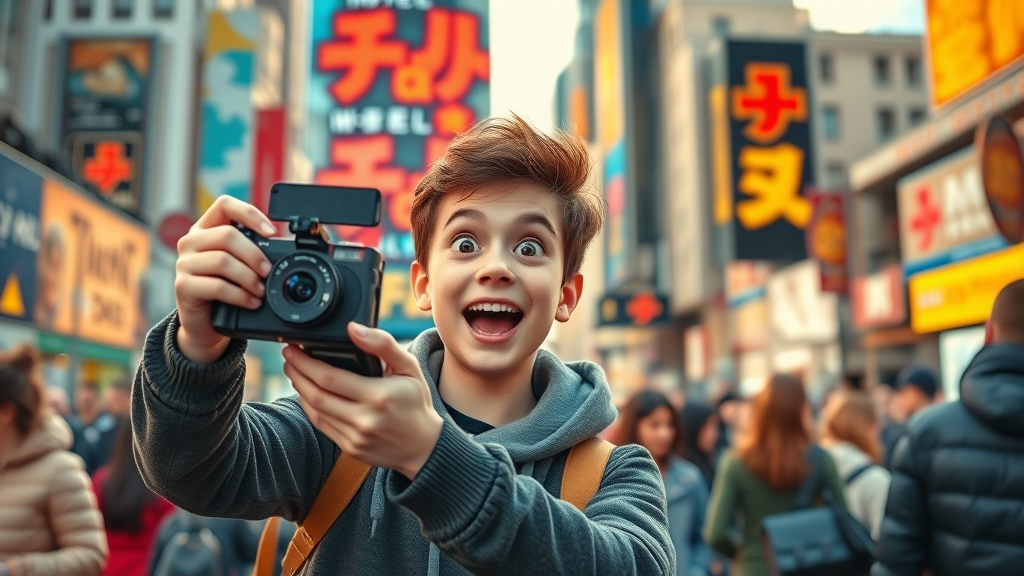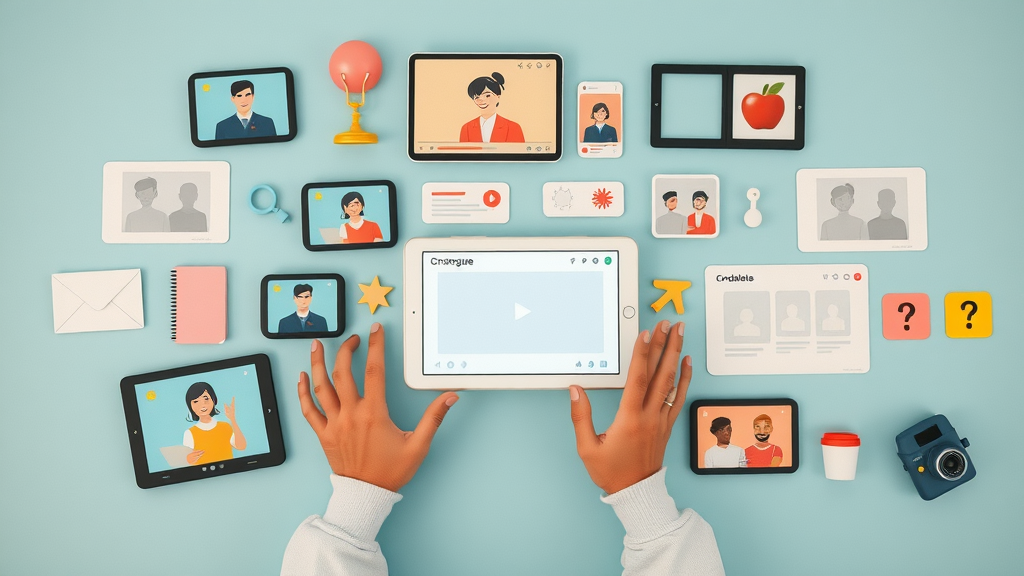Did you know? Brands with high brand awareness grow nearly twice as fast as their competitors. In a world where consumers see thousands of logos every day, standing out isn’t just smart—it’s essential. This guide reveals unconventional, actionable strategies proven to build brand awareness rapidly, drive customer loyalty, and give your brand a dominant market presence. If you want to see your brand rise above the noise, read on to find expert insights you won’t get anywhere else.
Did You Know? Why Brand Awareness is the Fastest Shortcut to Business Growth
In today’s saturated market, brand awareness has become the most important factor in business success. Recent studies show that 89% of consumers remain loyal to brands they recognize and trust. This suggests that building strong brand recognition isn’t just about being memorable—it’s about earning lasting loyalty and staying ahead of the competition. Brands that prioritize familiar, trustworthy experiences are more likely to generate repeat business and customer advocacy.
Brand awareness provides a shortcut to growth because when consumers are aware of your brand , the path to purchasing decisions becomes significantly shorter. People are more likely to choose products and services they’ve heard of or seen recommended by their peers, whether it’s on social media or during daily life. The higher the awareness, the lower the resistance to your marketing messages, enabling your advertising campaigns and marketing strategies to deliver better and faster results.
This is why businesses, from startups to industry giants, invest heavily in building brand awareness through creative marketing campaigns and content strategies. With the right approach, new brands can disrupt markets and established companies can reinforce their leadership. If your goal is to build brand loyalty and turbocharge your marketing efforts, focusing on increasing awareness is the fastest way to get there.
- Learn how 89% of consumers stay loyal to brands they recognize and trust.
- Discover unconventional tactics that transform your visibility—and why modern brand awareness can make or break success.

Critical Brand Awareness Strategies: Action Steps for Immediate Results
Understanding Brand Awareness: Definition, Importance, and Immediate Benefits
Brand awareness refers to how well your target audience recognizes and recalls your brand, products, or services. In crowded industries, a high level of awareness helps your brand stand out, influences purchasing decisions, and can shape the overall brand image in customers’ minds.
A strong brand awareness strategy is essential for cutting through market clutter and earning instant credibility. When potential customers instantly recognize your name or logo, you’ve established a foundation for high brand loyalty and easier conversions. In fact, high brand awareness is directly linked to better brand recall , more responsive advertising campaigns, and accelerated business growth. For new businesses, early wins such as creative social media campaigns or influencer partnerships can quickly create buzz and build trust among a larger audience.
Top brands make building brand awareness a core part of their overall marketing plan. Whether it’s through engaging blog posts , strategic partnerships, or viral video content, the advantages are clear: greater customer loyalty, competitive advantage, and increased market share. In short, investing in awareness pays off with immediate—and compounding—benefits.
- Definition of brand awareness
- Importance in saturated markets
- Quick wins for building brand

How to Effectively Build Brand Awareness with Social Media
Leveraging social media is one of the fastest and most cost-effective ways to build brand awareness today. Platforms such as Instagram, TikTok, LinkedIn, and Facebook allow brands to target specific audiences, create viral campaigns, and encourage rapid word-of-mouth marketing. The key is choosing the right platforms that align with your target audience and actively engaging with them using creative content that feels both authentic and shareable.
Developing a winning social media strategy starts with understanding where your audience spends their time—and what type of content captures their attention. Brands that prioritize eye-catching visuals, branded hashtags, and interactive stories see a dramatic boost in brand recall and loyalty. For example, a food start-up might team up with local food influencers to host themed challenges, generating user-generated content and driving awareness beyond their own followers.
Consider the case of a fashion retailer launching a limited-edition line: they create hype on TikTok by sharing behind-the-scenes videos and partnering with micro-influencers. As a result, brand mentions skyrocket, and sales climb. This kind of integrated, social-driven approach ensures your brand is top of mind when customers make their next purchasing decision.
- Leveraging key social media
- Platform selection for your audience
- Unique content strategies
- Case study: Social-driven brand recall
Brand Recognition vs. Brand Recall: What Drives Mind Awareness?
Brand recognition and brand recall are two pillars of mind awareness that fuel every successful marketing campaign . Recognition is when consumers identify your brand visually—such as seeing your logo and knowing what it stands for. Recall is more challenging: it’s when a consumer thinks of your brand or product spontaneously when faced with a need or product category, even without a visual prompt.
Understanding the difference is crucial; brands that achieve high levels of both are more likely to build long-term relevance and drive repeat purchases. For example, brand recognition gets your foot in the door, while high brand recall ensures you stay there when the customer is ready to make a choice. These elements combine to create mind awareness —the ability of your brand to live rent-free in consumer memory.
Here’s how they compare:
| Attribute | Brand Recognition | Brand Recall | Mind Awareness |
|---|---|---|---|
| Description | Able to identify brand visually (logo, color, packaging) | Remembers brand name spontaneously without visual cue | Brand is top-of-mind in relevant situations |
| Example | Sees Starbucks’ logo, knows it’s coffee brand | Thinks of Nike when asked about sports shoes | Recommends Coca-Cola when someone asks about soda |
| Impact | Immediate recognition, aids in quick decisions | Shapes brand preference, higher chance of repeat business | Failsafe advantage in competitive markets |

Brand Equity and The Psychology of Strong Brand Awareness
How Brand Equity Propels Your Brand’s Influence
Brand equity is the value your brand adds to your products and services based largely on the perception, trust, and loyalty you’ve built. High brand equity means your brand commands influence, premium pricing, and long-term customer relationships. It’s directly affected by how much people trust, recognize, and emotionally connect with your brand image.
Building brand equity is not just about visibility; it’s about creating positive associations and emotional triggers. The more strongly customers identify with your story, values, and purpose, the more likely they are to advocate for you—turning brand awareness into a powerful form of market leverage. This is what sets cult-favorite brands apart: emotional engagement at every touchpoint.
To create strong brand equity, focus on delivering consistent value at every customer interaction, from top-of-the-funnel advertising campaigns to post-purchase support. Positive brand experiences build trust, reinforce recall, and establish your brand as a market thought leader.
- Brand equity fundamentals
- Building brand equity
- Emotional triggers in strong brand building
“Your brand is the single most important investment you can make in your business.” — Steve Forbes
Building a Strong Brand Presence: From Awareness to Loyalty
To move from brand awareness to long-lasting brand loyalty , you need to create a strong, immersive brand experience at every customer touchpoint. Start by mapping the customer journey, ensuring every interaction—whether online or in-store—reflects consistent messaging, tone, and values. This seamless presence increases trust, reinforces brand recall, and transforms casual awareness into lasting advocacy.
Loyalty-driven campaigns, such as rewards programs or personalized communications, nurture relationships and encourage repeat business. Brands that deliver on their promises, keep an active social presence, and quickly address feedback see higher customer retention and lifetime value. Remember, it’s not enough to get noticed; you need to offer a compelling reason for customers to stay engaged and enthusiastic about your brand story.
This journey from initial awareness to deep connection is the hallmark of a strong brand . By investing in customer experience and deliberately fostering brand loyalty, you build resilient brand equity that pays dividends in both sales and reputation.
- Creating a strong brand experience
- Customer journey mapping for sustained awareness
- Loyalty-driven marketing campaigns

Case Study Video: How Top Brands Build Brand Awareness & Equity
[Insert video showcase here—describing case studies or examples from top brands that have achieved significant growth through innovative brand awareness campaigns and meticulous brand equity building. Highlight the actionable strategies taken and the measurable business results.]
Creative Tactics to Increase Brand Awareness Fast
Building Brand Awareness through Guerrilla and Influencer Marketing
Thinking outside the box is the secret to rapid brand awareness growth. Guerrilla marketing campaigns—such as flash mobs, street art, or bold public stunts—can quickly make your brand go viral, reaching new audiences and earning critical media coverage. These unconventional tactics grab attention because they play on surprise, creativity, and direct audience participation.
In the digital world, partnering with targeted influencers provides a shortcut to increasing trust and visibility. Choose partners who share your brand values and have a genuine connection with your target audience. Instead of only focusing on large macro influencers, consider micro-influencers with high engagement rates—they often deliver more loyal followings and better long-term impact for your brand or product.
Creative brand partnerships also amplify awareness. For instance, a local coffee shop might collaborate with a neighborhood art gallery to host an event, sharing the audience base and boosting brand recognition for both businesses. The combination of guerrilla creativity and influencer endorsement ensures your brand is remembered long after the campaign ends.
- Unique campaign examples for viral growth
- Brand partnerships and influencer strategy

Social Listening and Real-Time Engagement: Modern Methods to Build Brand
Social listening is the art and science of monitoring digital conversations to understand how people feel about your brand, products, or competitors. Dedicated tools like Brandwatch, Mention, or even Google Analytics help you measure brand sentiment , track trending topics, and react to customer feedback in real time. Effective brands don’t simply broadcast—they listen, adapt, and actively engage in the conversation.
Real-time engagement is crucial for building brand awareness in today’s fast-paced social environment. By responding to comments, sharing timely content, or joining trending discussions, you humanize your brand and create shareable moments that expand your reach. Whether defusing a crisis or celebrating customer milestones, showing that you care builds strong relationships and positive brand image.
Best practices for real-time engagement include setting up alerts, empowering your team to act quickly, and creating templates for rapid, authentic responses. Brands that excel in social listening often anticipate trends, tailor content—for instance, launching an impromptu meme—and amplify reach through customer advocacy and word-of-mouth.
- Tools to measure brand sentiment
- How social listening increases brand awareness
- Real-time engagement best practices

Video Showcase: Social Media Tricks for Explosive Brand Recall
[Embed or link to a video guide-reel showing quick social media hacks for brand recall: using trending audio, interactive Stories, or user duets to increase brand visibility and create memorable moments.]
Top 5 Content Types That Drive Brand Awareness and Recognition
- User-generated content: Tap into your community by encouraging reviews, photos, and stories that showcase your brand in the wild.
- Videos and live streams: From product demos to behind-the-scenes glimpses, video content personalizes your message and amplifies your reach.
- Interactive polls and quizzes: Drive engagement and learning while collecting valuable audience insights.
- Educational blog posts: Establish yourself as a thought leader and resource for your industry, building trust and SEO credibility simultaneously.
- Community challenges: Launch hashtags, contests, or group projects—building a movement around your brand and generating exponential word-of-mouth.

Measuring Brand Awareness: KPIs for Success
The Metrics that Matter: How to Measure Brand Awareness
To ensure your brand awareness efforts are paying off, it’s vital to measure the right metrics. Start with survey tools to gauge brand recall—ask your audience whether they recognize or remember your brand among competitors. Monitor your social media metrics to see how often your brand is mentioned, shared, and discussed online. Tracking website analytics using platforms like Google Analytics gives insights into branded search terms, direct traffic, and referral sources.
Additionally, brand equity scoring systems combine quantitative and qualitative data—such as customer feedback, loyalty rates, and social sentiment—to provide a high-level view of your brand’s position in the market. Regularly reviewing these KPIs helps you adapt your campaigns, strengthen weak spots, and maximize ROI for your marketing strategies.
- Survey tools for brand recall
- Social media metrics
- Website analytics
- Brand equity scoring systems

Table: Measurement Tools for Brand Awareness
| Tool Name | Metric Type | Best Use Case | Pricing |
|---|---|---|---|
| Google Analytics | Website analytics | Track direct, referral, branded traffic | Free |
| Brandwatch | Social listening, sentiment analysis | Monitor brand mentions, campaigns | Paid |
| SurveyMonkey | Consumer surveys | Measure brand recall & perception | Freemium/Paid |
| Sprout Social | Social media analytics | Track engagement, reach, impressions | Paid |
| YouGov BrandIndex | Brand equity tracking | Benchmark competitive standing | Paid |
Expert Video: Step-by-Step Guide to Measure Brand Awareness Accurately
[Video embed: Walkthrough for small businesses and marketers on how to set up brand awareness measurement dashboards, read analytics, and interpret results for continuous improvement.]
Elevate Your Marketing Campaigns: Building Brand Awareness Through Creative Channels
Integrating Brand Awareness into Every Marketing Campaign
To maximize your marketing campaign ROI, integrate brand awareness goals into every channel—social, print, video, and digital. Multi-channel campaigns reach customers wherever they are, ensuring consistent and widespread visibility. Sharing content tailored to each platform’s strengths (e.g., infographics on Pinterest, mini-videos on Instagram Reels) ensures you engage a diverse audience and reinforce your brand message repeatedly.
Content plays a starring role in all these efforts. SEO-friendly blog posts, viral video clips, interactive quizzes, and branded digital swag all help to tell your story and capture your audience’s attention. Brands should prioritize creating memorable, shareable, and interactive content that keeps their products and services top of mind.
- Multi-channel integration
- Role of content in social media promotion
- Interactive campaigns for brand recall

Quotes from Marketing Industry Leaders on Building Brand Awareness
"Build brand awareness not just to be seen, but to be remembered in a noisy world." — Jessica Alba
People Also Ask (PAA): Deep Dive Into Brand Awareness Clarity
What do you mean by brand awareness?
- Brand awareness refers to how familiar consumers are with the distinctive qualities or image of a particular brand of goods or services.
In other words, it measures how well your target audience recognizes your brand, logo, or message. A high level of brand awareness means your brand has become synonymous with a product or service in the consumer’s mind, increasing the likelihood of selection and loyalty.
Marketers focus on improving brand awareness because it makes advertising campaigns more effective, bolsters brand equity , and ultimately boosts market share. As brand awareness grows, trust and positive brand associations deepen, making organizations leaders in their fields.
What are the 4 stages of brand awareness?
- The four stages are: Brand Recognition, Brand Recall, Top-of-Mind Awareness, Brand Dominance.
Each stage reflects the evolving relationship between a brand or product and its audience. First is brand recognition , where customers can identify your visual elements. Next is brand recall , the ability to remember your name without prompts. Top-of-mind awareness means your brand is the first that comes to mind in your category, while brand dominance is when yours is the only brand considered by consumers at the time of purchase.
Understanding and targeting each stage helps marketers build a comprehensive brand awareness strategy for every audience segment. By advancing through these stages, brands significantly increase their market traction and customer loyalty.
What is an example of brand awareness?
- A consumer recalling the Nike Swoosh logo or automatically associating 'cola' with Coca-Cola.
This instant association is the result of consistent branding and effective marketing strategies. For example, seeing golden arches brings McDonald’s to mind regardless of the country, embodying excellent brand awareness and recall. These examples demonstrate the direct connection between branding, recognition, and consumer preference during a purchasing decision.
Brands that reach this level usually invest in long-term, memorable campaigns and continuously reinforce their brand image across channels. This strategy is what keeps them top-of-mind and ensures enduring consumer trust.

What are the three types of brand awareness?
- Brand Recognition, Brand Recall, Top-of-Mind Awareness.
The three types measure different levels of consumer familiarity. Brand recognition is the ability to identify visual elements; brand recall is the ability to remember a brand’s name when asked; and top-of-mind awareness is when your brand is the first customer thinks of in a particular category.
Successful building brand awareness strategies aim to advance from recognition to recall to a trusted top-of-mind status. Brands that reach these levels enjoy customer loyalty, higher retention, and more effective advertising campaigns .
Start Building Brand Awareness: Your Next Steps and Key Takeaways
- Recap of top strategies to build brand
- Visual summary of creative content tactics
- Checklist for a strong brand awareness campaign
- Recommended brand awareness measurement tools

Get a Custom Social Media Brand Awareness Game Plan for Fast Growth
- Want a social media plan built specifically for your business? Drop SOCIAL below or message us to get your custom game plan.
Actionable Step: Pick one tactic from this guide, implement it today, and watch your brand awareness grow. Consistent action creates lasting market impact and sets your brand on the path to lasting success.
 Add Row
Add Row  Add
Add 




Write A Comment